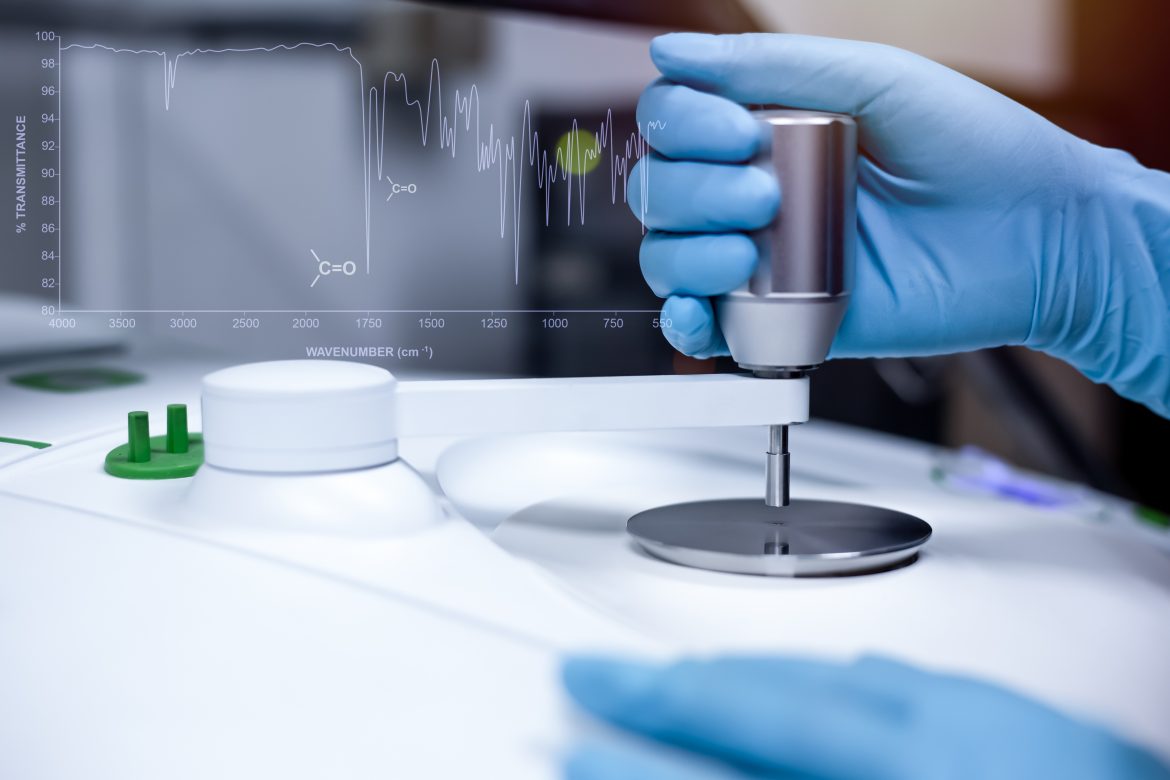In the realm of scientific exploration, a fascinating synergy emerges when cutting-edge technology meets traditional methodologies. Imagine this: machine learning stepping into the world of spectroscopy analysis, sparking waves of innovation within laboratory walls.
This partnership reveals a spectrum of possibilities, where data-driven precision intertwines with the intricate dance of spectral analysis. It’s a story of innovation, unraveling complex patterns within spectral data to unveil profound insights into the molecular tapestry of our world.
As this technological leap opens doors to unparalleled discoveries and applications across industries, our exploration delves into the landscape of machine learning’s impact on spectroscopy analysis. Join us on this journey as we illuminate the profound synergy between machine learning and spectroscopy, highlighting their revolutionary potential in scientific exploration.
Lets look at some specific examples:
1. Spectral Pattern Recognition for Compound Identification:
Application Scenario:
In the field of pharmaceuticals, where numerous compounds undergo analysis, machine learning aids in swiftly identifying and classifying compounds based on their spectral fingerprints.
Detailed Application:
- Neural Networks for Compound Identification: Neural networks, particularly convolutional neural networks (CNNs), are adept at recognizing complex patterns in spectral data. Trained on vast datasets containing spectral information of known compounds, these networks learn to identify unique patterns specific to different substances. They excel in tasks like distinguishing between drug isomers or identifying impurities within formulations by comparing spectral signatures.
2. Noise Reduction and Signal Enhancement:
Application Scenario:
In environmental monitoring, where spectral data might be affected by various sources of noise, machine learning plays a vital role in enhancing signal quality for accurate analysis.
Detailed Application:
- Deep Learning Denoising Autoencoders: Deep learning models, like denoising autoencoders, are trained to differentiate noise from meaningful signals within spectra. By learning representations of noise patterns, these models effectively filter out unwanted noise while preserving crucial spectral features. This process ensures more accurate analysis, especially when studying pollutants in environmental samples or analyzing forensic evidence.
3. Quantitative Analysis and Calibration:
Application Scenario:
Quality control processes in the pharmaceutical industry rely heavily on accurate quantitative analysis. Machine learning facilitates precise calibration for reliable measurements.
Detailed Application:
- Partial Least Squares Regression (PLS): PLS regression models establish relationships between spectral data and concentrations of compounds. These models enable calibration, ensuring accurate quantification of active pharmaceutical ingredients or impurities in drug formulations. Pharmaceutical companies leverage these models to meet stringent quality standards and regulatory requirements, ensuring consistent product quality.
4. Automated Chemical Structure Elucidation:
Application Scenario:
In drug discovery and analysis, rapid identification of unknown compounds or impurities is critical. Machine learning expedites the elucidation of molecular structures from spectral data.
Detailed Application:
- Decision Trees and Bayesian Models: Decision tree-based algorithms and Bayesian models analyze spectral fingerprints to predict molecular structures. By correlating specific spectral features with known structures, these models aid in determining the most likely chemical compositions. This application streamlines the process of identifying new compounds or verifying the presence of impurities in pharmaceutical formulations.
5. Real-time Spectroscopic Analysis in Process Monitoring:
Application Scenario:
Industries such as manufacturing rely on real-time analysis to maintain quality and efficiency. Machine learning-based spectroscopy offers continuous monitoring and control of chemical processes.
Detailed Application:
- ML-driven Process Monitoring: ML models trained on historical spectral data continuously analyze real-time spectra from ongoing manufacturing processes. These models detect deviations or anomalies from predefined patterns, enabling timely interventions to maintain consistent product quality. In industries like pharmaceutical manufacturing, this application ensures adherence to quality standards and minimizes production variations.
These detailed applications highlight how machine learning techniques are specifically applied within spectroscopy analysis, showcasing their significance across various industries and scientific disciplines for precise, efficient, and innovative chemical analysis.


Leave a Reply